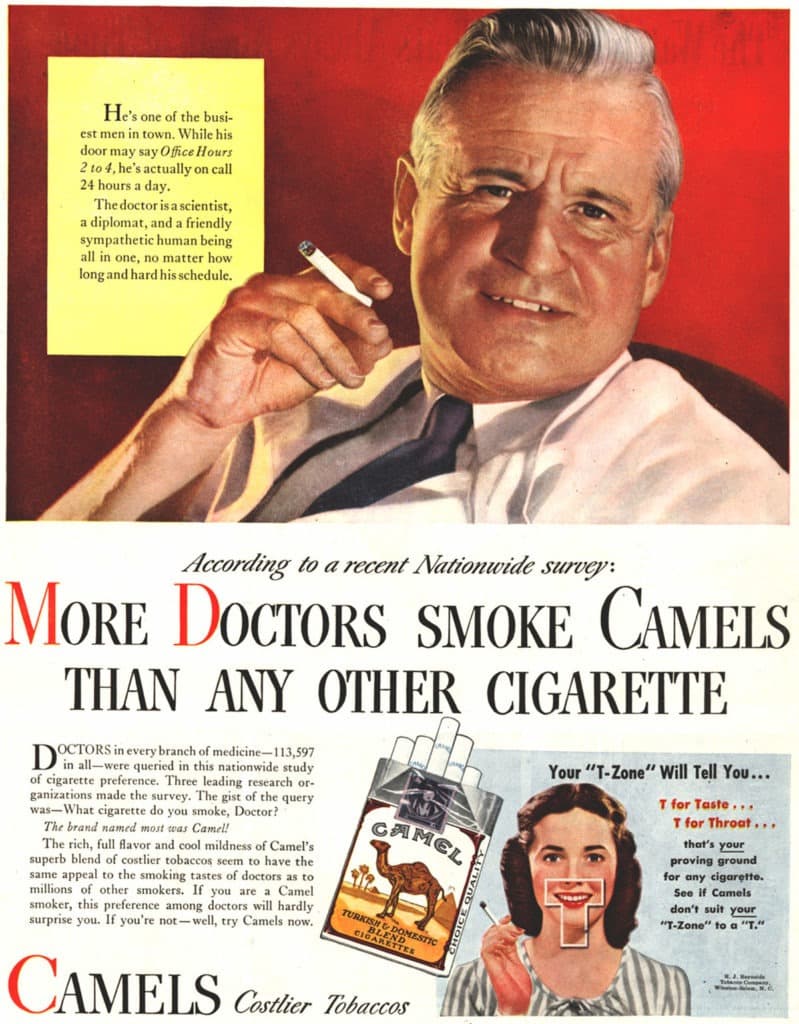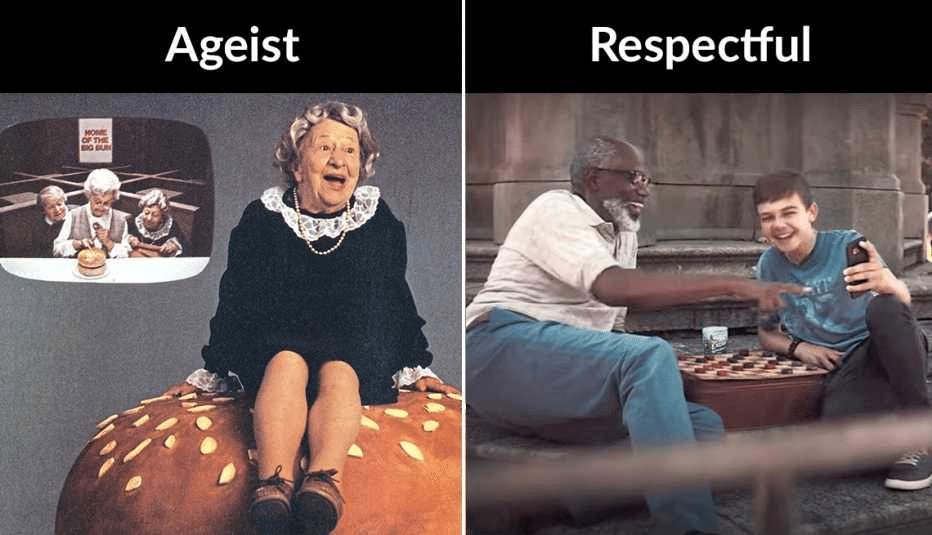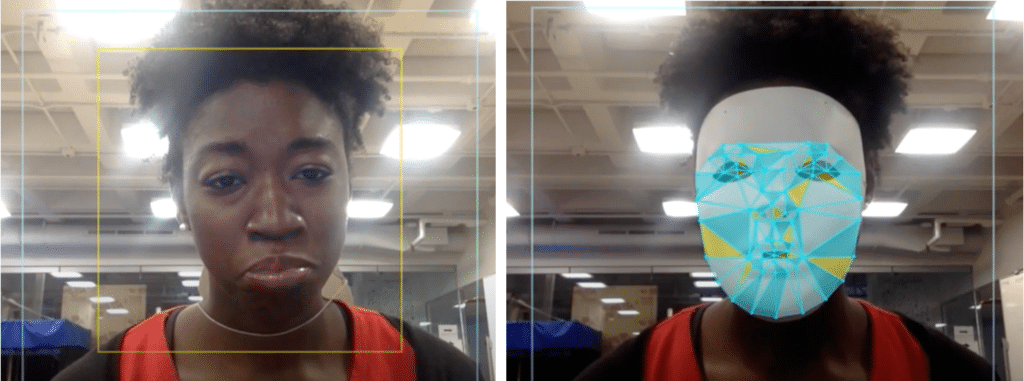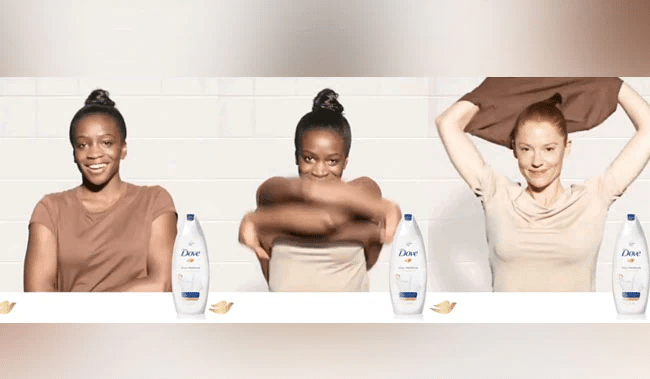Bias in advertising amplifies societal stereotypes. These skewed representations not only limit the narrative scope we collectively share but also shape public perceptions of individuals’ roles and capabilities. As advertisers, it’s our responsibility to challenge these norms and craft more inclusive and diverse campaigns.
This article examines the different types of biases in advertising, how to identify bias in your advertising efforts, and reviews biased advertising examples from major brands. Our aim is to provide actionable insights for brands striving for authentic and unbiased campaign representation.
📑 Table of Contents
Advertising Bias Definition
Bias in advertising refers to the unequal or unfair representation, subjective opinions, or one-sided perspectives within ads. It relies on assumptions about groups of people rather than objective truth.
Bias can be both intentional (overt), where advertisers purposefully push a particular perspective, or unintentional (covert), stemming from ingrained societal norms and prejudices.
The most common biases are based on characteristics such as:
- Race
- Ethnicity
- Gender
- Religion
- Sexual orientation
- Socioeconomic background
- Educational background
Bias Ad Example: The “More Doctors Smoke Camels” Campaign (1946)

This biased ad example exploits the public’s trust in doctors to promote cigarette smoking while downplaying smoking’s health risks.
Bias in advertising can influence consumer perceptions, behaviors, and societal attitudes, making it a crucial concern for ethical advertising practices.
Types of Biased Advertising (+ Examples)
Biased advertising takes shape through various means, including stereotyping, underrepresentation, misrepresentation, and/or appeal to authority.
In the following section, we’ll delve into each of these types, highlighting biased advertising examples.
Disclaimer: This section aims to provide an overview of various types of biases observed in advertising. It’s important to note that interpretations and categorizations of bias can vary based on cultural, societal, and individual perspectives.
1. Implicit or Unconscious Biases
Unconscious biases, or implicit biases, are deeply rooted assumptions about certain groups. Formed by upbringing, culture, and societal influences, they subconsciously influence our decisions and interactions, often going unnoticed.
Examples of Unconscious/Implicit Bias
In advertising, racial, gender, and age biases are the most common types, manifesting in many overlapping ways:
- Stereotyping: Assigning general traits based on race, gender, or age, like depicting older people as tech-averse, women as overly emotional, or racial groups in clichéd roles.
- Underrepresentation: Inadequately portraying certain races, genders, or age groups in diverse settings.
- Tokenism: Superficially including a minority figure for appearance’s sake without meaningful representation.
- Objectification: Emphasizing physical aspects, especially with women, or reducing older individuals to age-specific roles.
- Diminishment: Depicting groups as less competent due to their race, gender, or age.
- Erasure: Overlooking certain demographics entirely.
- Othering: Highlighting differences of certain groups, making them seem exotic or foreign.
- Appropriation: Borrowing elements from a culture without understanding or respect.
- Paternalism: Representing groups, like older people or women, as needing care or guidance.
Below, we’ll review each in more detail with examples.
Racial Bias
Racial bias refers to the subconscious prejudices and stereotypes regarding individuals of a different race.
One of the most prevalent forms of racial bias in advertising is underrepresenting racial and ethnic minorities. For years, advertisements primarily featured individuals from dominant racial groups, often sidelining minority voices and faces.
How Americans View Representation in Advertising
A recent Adobe report found that up to 120 million people in the United States don’t see themselves portrayed in ads.
Despite constituting 37% of the population, African Americans, Asian Americans, and Latino/Hispanic Americans often feel underrepresented or stereotyped. 66% of African Americans, 53% of Latino/Hispanic Americans, and 51% of Asian Americans express discontent with their portrayal in advertising.
Such underrepresentation sends a problematic message about who is considered ‘normal’ or ‘ideal’ in society, leaving significant portions of the audience feeling invisible or undervalued.
Example: PlayStation | White is Coming

In 2006, PlayStation launched this ad in the Netherlands to advertise the white PlayStation Portable model, which quickly drew controversy.
Why It’s An Example of Bias
This ad harmfully depicts a white woman dominantly positioned over a black woman, suggesting superiority. Portrayals like this can perpetuate harmful racial stereotypes by implying that white is preferable and dominant. Sony later acknowledged the ad’s potential racial insensitivity and apologized.
📚 Related Article: 7 Examples of Brands That Nailed Multicultural Marketing: Read our compiled list of successful campaigns that have effectively reached and resonated with diverse audiences.
Gender Bias
Gender bias stems from preconceived notions and stereotypes associated with a person’s gender. It often leads to the belief that one gender is better suited for specific roles or tasks.
For instance, research from Zipdo found that 25% of commercials depict males as the family’s primary breadwinners. Additionally, a study by Unilever discovered that only 3% of ads feature women in leadership roles.
Biased Advertising Laws in Other Countries
In 2019, the UK’s Advertising Standards Authority banned ads showcasing gender stereotypes, such as women solely cleaning or clueless men with diapers. Brooke Erin Duffy, a Cornell communication professor, noted that the UK’s standards exceed the U.S.’s. However, other countries have previously implemented laws against gender discrimination in ads.
Example: Pine O Cleen | Put Time Back in Your Day

Pine O Cleen is an Australian disinfectant supplies company. This was one of their many ads promoting their cleaning wipes product.
Why It’s An Example of Bias
The ad, showing a woman relaxing alongside a cleaning product, suggests that cleaning is mainly a woman’s duty and that using Pine O Cleen wipes can help them save time for leisure.
Does the way things are marketed have a real impact on gender identity and self-concept?
“There is a really big body of work around the impact of marketing and just how powerful it is — young women are consuming something like 10,000 messages a day from brands. Think about the collective impact that can have when the same things are being said over and over again, which are usually: Be thinner, be blonder, be more feminine, be hairless, be whiter.
Cumulatively, it does have an effect. But why not sell products in a way that is going to have a positive effect on women, not just young women but all women? Why does it have to be so fraught? Women have enough real problems that need to be solved by brands and products, you don’t need to make them up.”
Ageism
Ageism pertains to prejudices or discrimination against individuals based on their age. Often, older adults are the primary victims, depicted in ways that either make light of their capabilities or paint them in an unflattering light.
People 55+ now control 70% of all personal wealth in the United States, but advertising is too often out of sync with today’s aging majority buyer population.
Underrepresentation and Negative Portrayal of Older Adults in Online Media
According to a 2019 AARP study, those aged 50 and over who do most of the consumer spending represent only 15 percent of adults in online media images and are seven times more likely than younger adults to be portrayed negatively.
The negative impact is multiplied for older minorities.
How can marketing agencies prevent ageism in their ads?
“When you do not have older people actually creating, directing and producing the ads, what you get are clichés and stereotypes.”
Example: Acronym | Dear Young People, Don’t Vote
The “Dear Young People, Don’t Vote” ad used satire to urge youth participation in the 2018 U.S. midterms. Featuring older individuals mockingly advising youth not to vote, it emphasized the impact of young voters’ choices and motivated them to have a say in key issues.
Why It’s An Example of Bias
This glaring ad, backed by the D.C.-based nonprofit Acronym, perpetuates ageist stereotypes, portraying older individuals as universally apathetic and out-of-touch with the concerns of younger generations.

Ageist ads portray elderly individuals as caricatures. Respectful ads portray older adults as part of the community, as mentors and friends.
🔍 Up to 70% of Enthnicity-Based Targeting May Miss The Mark.
Dive into our curated tips & tricks for multicultural audience development.
2. Data-Driven Biases
Statistical or Sampling Bias
Statistical bias refers to data distortion that results in misleading conclusions. This typically occurs when the data collected doesn’t truly represent the entire population it’s meant to describe.
Data, especially from companies lacking data maturity, sometimes unintentionally favors one group over another due to various data collection constraints like using unclean Third-Party data without supplementing with First-Party data directly from a company’s own customers.
Example: Relying Solely on Third-Party Data

A retail company relied solely on Third-Party data to determine market demand for a new product. However, because they didn’t supplement with First-Party data from their existing customer base, they overlooked key preferences unique to their audience. This resulted in a product misalignment and lower overall sales.
Why It’s An Example of Bias
The company made decisions based on external data that may not have represented its specific customer base. Not including their own First-Party data introduced a potential skewness, failing to account for their audience’s needs and wants.
Technological Bias
Advertising increasingly leans on platforms that segment audiences, tailor offers, and fine-tune creatives automatically. It’s important to recognize that this isn’t inherently neutral.
Technological bias arises when human prejudices and stereotypes happen because of the data sets engineers use to train the platforms. If the data sets contain biased information, the output can be prejudiced.
Example: Facial Recognition Bias

Facial recognition algorithms have higher error rates for darker-skinned females.
Face recognition algorithms can show biased accuracy rates across demographics. The “Gender Shades” project in 2018 found that algorithms, including those from IBM and Microsoft, had higher error rates for darker-skinned females, sometimes 34% higher than lighter-skinned males.
Why It’s An Example of Bias
This disparity reveals underlying dataset prejudice, leading to technological systems that don’t serve all users equally.
📚 Related Article: AI Has a Diversity & Inclusion Problem: Explore how bias in AI impacts people today and the steps we can take to avoid these pitfalls in the future.
Systemic Bias
Systemic bias, often called institutional bias, is ingrained in the structures of organizations, policies, or societal norms. It’s not about individual prejudices but rather about overarching practices that result in discriminatory outcomes for certain groups.
Here are some ways systemic bias occurs in advertising:
- Underrepresenting certain groups (e.g., based on gender, race, age, sexual orientation).
- Propagating narrow or clichéd portrayals of certain demographics.
- Not considering the needs and interests of all potential consumers when creating campaigns.
- Disproportionately advertising spending on media consumed by dominant groups, leaving out diverse audiences.
- Associating certain products or services with specific demographic groups.
Of course, there are products often tailored for specific demographics, like maternity wear for pregnant women or certain hair products for specific hair types.
While targeting ads for these products to relevant groups is strategic marketing, systemic bias arises when stereotypes dictate ad practices, leading to exclusion or misrepresentation. The goal is to balance genuine needs with avoiding harmful stereotypes.
How have recent advertising controversies illuminated racial biases?
“Think of H&M’s ‘Coolest Monkey’ ad featuring a black child; Dolce & Gabbana’s ‘Chopsticks Racism Row’; Heineken’s ‘Sometimes, lighter is better’ advertisement and of course, Pepsi’s renouncement of its Kendall Jenner-fronted ad campaign which was accused of co-opting the imagery of protest movements to sell soda. After social media outcries, brands have humbly—or reluctantly—ridden this wave of condemnation, retreated to the drawing board, and adjusted their advertising accordingly, often preceded by PR-advised apologies of ‘lessons learned.’”
Example: Dove Soap

In 2017, Dove released an ad where a Black woman transformed into a white woman, evoking a long-standing racist trope in soap advertising: a “dirty” black woman cleansed into whiteness.
Why It’s An Example of Bias
Dove’s ad unintentionally perpetuated racial stereotypes equating Blackness with impurity. Its production and approval highlight ingrained biases within the advertising industry’s processes.
📚 Related Article: Multicultural Marketing Maturity Framework: Learn more about the Campaign Maturity Model KORTX uses to help diagnose a multicultural marketing strategy or program.
3. Cognitive Biases
Cognitive biases are systematic patterns of deviation from norm or rationality in judgment. These biases can lead individuals to make illogical conclusions or decisions that aren’t in their best interest.
There are over 180 cognitive biases, so we can’t list them all, but below are the most common types in advertising.
Confirmation Bias
Confirmation bias is the tendency to favor information that confirms one’s existing beliefs and dismiss contradictory data. In other words, people are more likely to accept information that aligns with their existing views and reject or overlook information that contradicts them.
Example: Positive Reviews for Customer Research

A brand primarily gathers and emphasizes positive feedback or reviews to reinforce its image, while disregarding or downplaying negative feedback that contradicts its desired image.
Why It’s An Example of Bias
Focusing on only positive reviews can mislead consumers, affecting their purchases, and erode trust in the brand if the product doesn’t meet expectations.
Exposure Bias
Exposure bias, also called the “mere exposure effect”, is when individuals prefer things simply because they’re familiar with them. The more we’re exposed to a particular stimulus, the more likely we will view it favorably.
Many brands exploit this bias to work to their advantage with strategies like retargeting. A study found that retargeted campaigns generated 10x higher click-through rates and 70% greater conversion rates.
Exposure bias isn’t inherently bad; it can foster brand loyalty but might also reduce openness to new ideas and narrow one’s media worldview by favoring familiar sources.
Example: Coca-Cola

Coca-Cola frequently places its advertisements in high-traffic areas and during prime-time television slots, ensuring that consumers are repeatedly exposed to the brand.
Why It’s An Example of Bias
As a result, many people may choose Coca-Cola over lesser-known sodas simply because of their familiarity with it, demonstrating exposure bias.
5 Tips on How to Avoid Bias In Your Advertising
Despite best efforts, bias can subtly infiltrate even the most well-intentioned campaigns. Historically, advertisers used simplistic methods to target demographics, leading to inaccurate and ineffective assumptions based on specific websites and ethnicities.
It’s tempting to generalize, thinking that people of a certain ethnicity predominantly visit particular websites, but this is a crude and outdated strategy.
Example: While trying to target the Hispanic demographic, marketers might focus on websites they assume are frequented by this group. However, these assumptions are often based on stereotypes, not solid data.
Here are 5 tips to avoid bias in your advertising campaigns:
1. Use a Data-Driven Approach
The advertising bias comes from assumptions marketers make when targeting their campaigns. The key is to use data over broad assumptions about where that audience spends time online. What is the data telling you?
By leaning heavily into quantitative data like First-Party, advertisers can understand real user behaviors rather than relying on preconceived ideas.
Example: A marketer advertises on a niche lifestyle website based on assumed preferences, potentially missing a wider audience. Using First-Party data, the marketer realizes many customers favor a particular sneaker and engage with its content. By focusing on this behavior rather than assumptions, the marketer promotes the sneaker on diverse platforms like sports sites and sneaker blogs. This strategy captures both the target and broader audiences with similar interests.
Tools like KORTX’s Axon Audience Manager give you real insights about your target audience, driving successful campaigns without making assumptions.
How can marketers ensure our marketing strategy is both inclusive and effective?
“Lean on data and take advantage of the fact that data is quantitative. You can see where you’re indexing without making assumptions. Let the data speak for itself, using multiple data points that can target various aspects simultaneously.
If you’re making targeting decisions, ensure they are data-backed and goal-oriented. Don’t treat multicultural advertising differently than any other targeting method. Always be cognizant of the goal. Focus on where and how your products are bought. Use data to identify all the places where potential customers spend their time.”
2. Define Your Goals
Before launching any advertising campaign, define and understand your specific goal. Is the primary aim to increase product sales or raise awareness for a particular event like Juneteenth or a cause?
Example: If your objective is to reach a broad audience or to promote a product unrelated to the music industry, blindly choosing BET.com based solely on assumed demographics might limit your reach.
3. Refine Your Message
When targeting a specific demographic, it’s imperative that your messaging resonates authentically. This requires thorough research into what messages are most effective for that audience.
For instance, if your aim to to engage with a particular ethnicity, ensure that your content speaks directly to their values, preferences, and cultural nuances.
Example: If you’re creating an ad targeting Asian Americans, research how Asian Americans perceive and interact with brands, their values, preferences, and cultural nuances. This way, your content won’t inadvertently perpetuate stereotypes.
4. Use Data from Self-Declared Sources
Rely on data sources that reflect self-declared information. Some platforms, like dating sites, allow users to specify their ethnicity, providing a more reliable data source than probabilistic models.
Probabilistic models make assumptions about an individual’s characteristics or behaviors based on patterns observed in data.
Example: A probabilistic model determines that a user who frequently visits basketball-related websites and listens to jazz music is likely African American. This assumption, based purely on behavioral patterns, is reductive and may not accurately represent the user’s ethnicity or personal interests.
5. Keep Your Multicultural Marketing Topical or Event-Oriented
Companies often find themselves walking a fine line between genuine representation and pandering in their ads.
To tread this line:
- Keep your messaging topical and event-oriented. For instance, during Pride Month, focus on the history, significance, and essence of the LGBTQ+ movement rather than making assumptions or leaning on stereotypes.
- Refrain from using generic assumptions like adding hip-hop music to a campaign targeting a Black audience. Such moves can come across as inauthentic or even offensive.
- Ground your campaigns in facts and real events rather than fabricated narratives. This can lend credibility to your messaging and reduce the chances of it being labeled as pandering.
Lead With Data, Not Assumptions
As long as you’re using data to inform your campaigns and not relying solely on assumptions or stereotypes, you’ll be better positioned to create authentic, impactful advertisements that genuinely resonate with your target audience and uphold the integrity of your brand.
A Data-Backed Strategy That WORKS.
Our expert team of digital strategists can help you harness the power of precise data, ensuring your campaigns hit the mark every time.
About the Author
Kate Meda is a Copywriter at KORTX. She enjoys omitting needless words and making things sound good.




